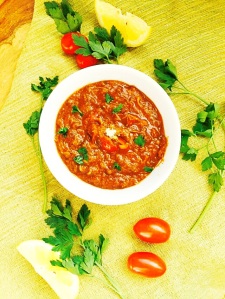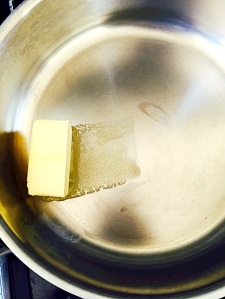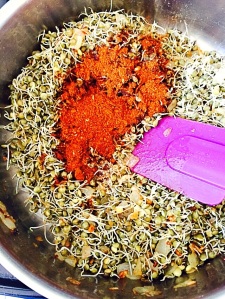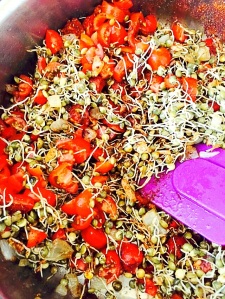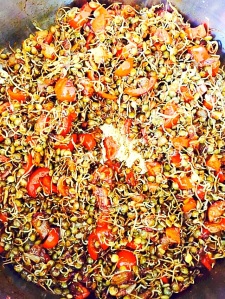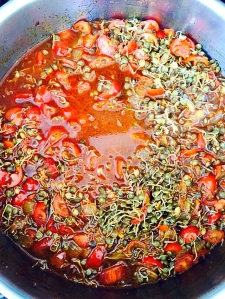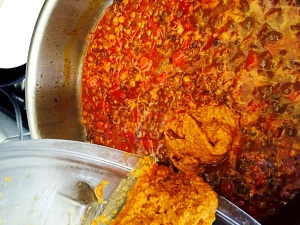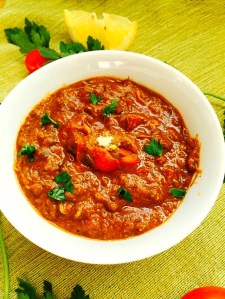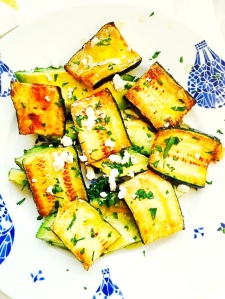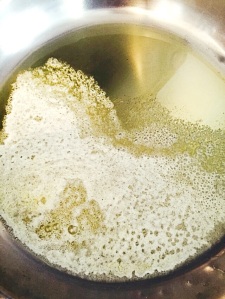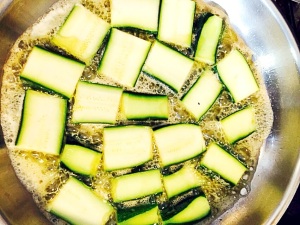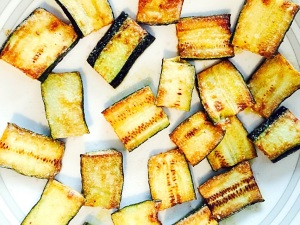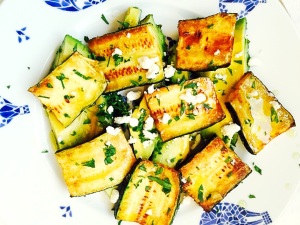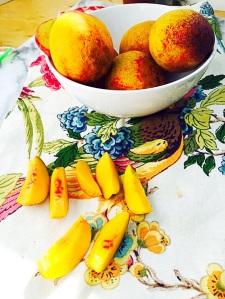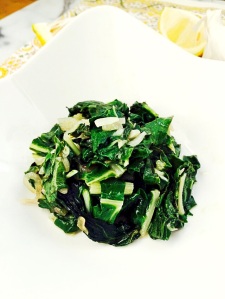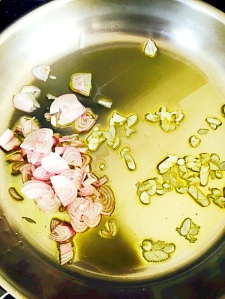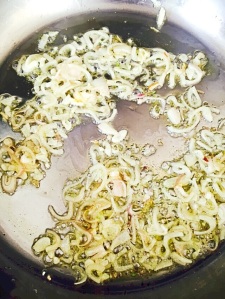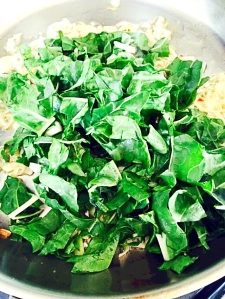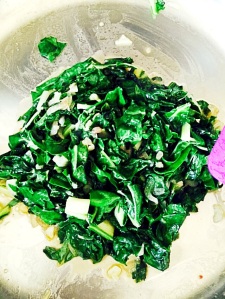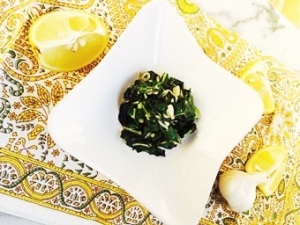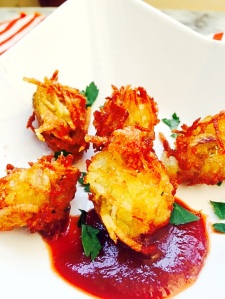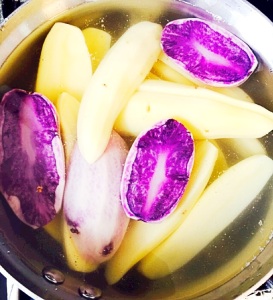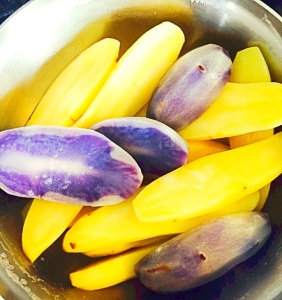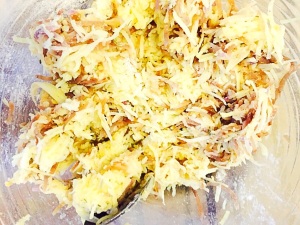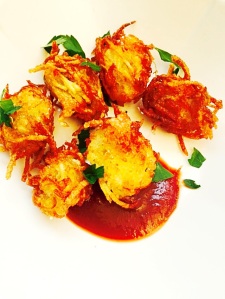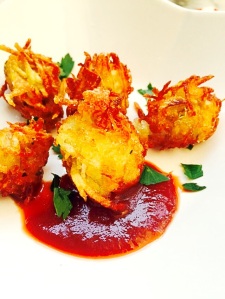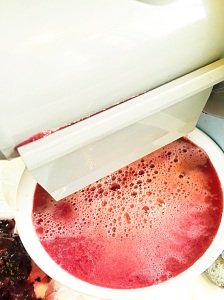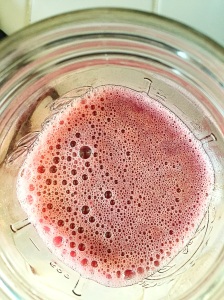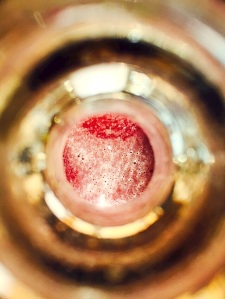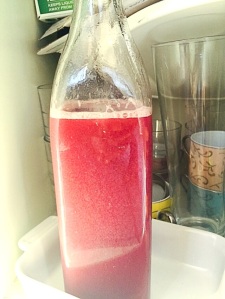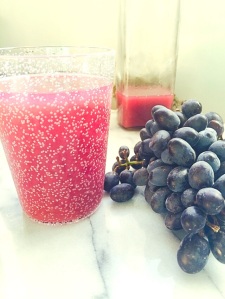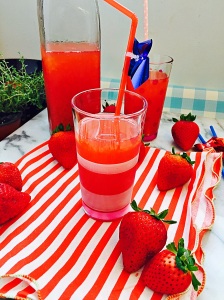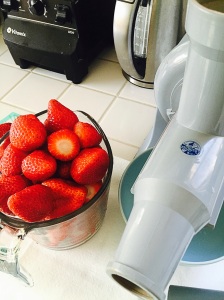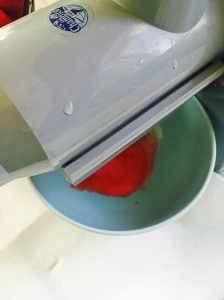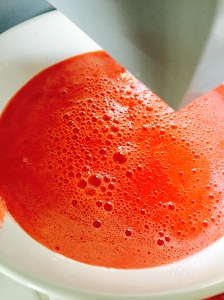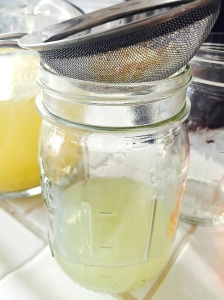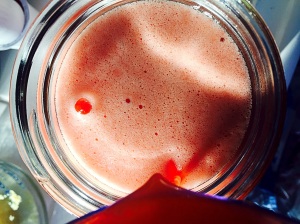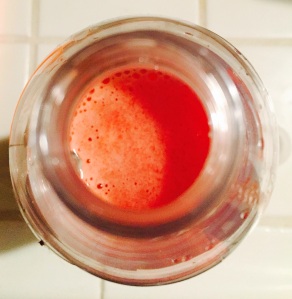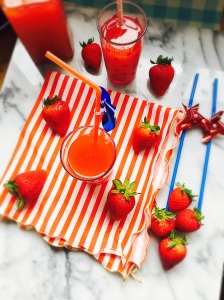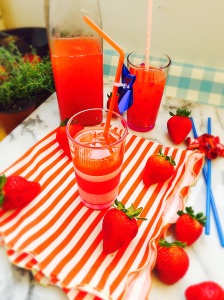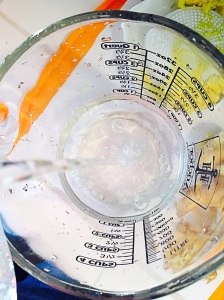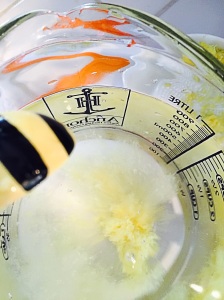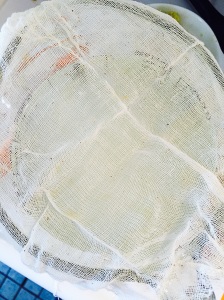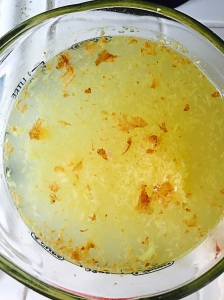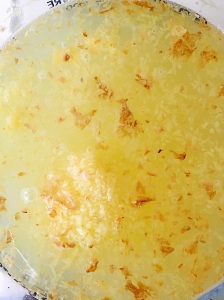So I've decided that this will be my last post until the summer is over. Mainly because we'll be traveling for at least three weeks in August, and today is Page's last day in her summer program at school. We have about a week of lounging around and playing in the back yard before she starts her Spanish immersion summer program. I want to spend as much time as I can with her, without looking at my phone to do all that blogging requires of me. I'll be sure to update my Instagram account with all of my food adventures--as usual. So if you aren't following me on Instagram, click on the link to the right to do so. Now to the recipe. Berbere Chicken was one of the first recipes that I shared on this blog. It's one of Page's favorite chicken dishes--although lately it is getting some strong competition from Sous Vide Chicken Thighs with Thyme and Garlic. She still love this chicken nonetheless. After make the chicken the last time, I was so impressed with the flavors, I wanted to add it to something else, and then it occurred to me how awesome this seasoning would be on lentils, in a soup. As I walked around my kitchen, grabbing ingredients and formulating a recipe in my head, lentils, tomatoes--because my garden is overflowing with them, onion, garlic, lemon, and berbere spice, it occurred to me that I had these flavors before in a dish at an Ethiopian restaurant. Sure enough there was a recipe for a stew by none other than Marcus Samuelson. While I did not follow his recipe exactly, my own isn't so far off. I used some Organic Green French Lentils, which I sprouted. His recipe and I guess the traditional recipe calls for red lentils. I added some of the preserved lemon salt to my bowl as a finish. If you haven't made my preserved lemon salt yet, a little preserved lemon would be awesome with this.
Ingredients
1 cup of sprouted organic green lentils
1 large tomato chopped
1 small onion, chopped
4 cloves of garlic
2 tablespoons of oil --your choice I used butter
2 tablespoons of berbere spice
1 lemon cut into wedges
3 cups of water
Ingredients for Berbere Spice
Ingredients:
3 Tablespoons of Paprika I used a smoked
1 tablespoon of red pepper flakes
1 tablespoon of ground ginger
1 tablespoon of cumin seeds or ground cumin
1teaspoon of ground turmeric
1teaspoon of sea salt
1 teaspoon of fenugreek powder, or seeds
1 teaspoon of coriander
6 cardmom pods or 1 teaspoon of ground cardamom
1/2 teaspoon of ground cinnamon
1/2 teaspoon of allspice
1/2 teaspoon of black peppercorns
8 whole cloves
3 Tablespoons of Paprika I used a smoked
1 tablespoon of red pepper flakes
1 tablespoon of ground ginger
1 tablespoon of cumin seeds or ground cumin
1teaspoon of ground turmeric
1teaspoon of sea salt
1 teaspoon of fenugreek powder, or seeds
1 teaspoon of coriander
6 cardmom pods or 1 teaspoon of ground cardamom
1/2 teaspoon of ground cinnamon
1/2 teaspoon of allspice
1/2 teaspoon of black peppercorns
8 whole cloves
Directions for spice blend:
Place all the spices in a dry cast iron skillet and cook over medium high heat, stirring constantly until toasted about 3-5 minutes. Cool completely place all ingredients in a spice grinder or blender until finely ground. Transfer to an air tight storage container for up to 3 months.
Place all the spices in a dry cast iron skillet and cook over medium high heat, stirring constantly until toasted about 3-5 minutes. Cool completely place all ingredients in a spice grinder or blender until finely ground. Transfer to an air tight storage container for up to 3 months.
Directions: Heat the oil along with the onion, and garlic and cook until onion is translucent.
Add in the lentils and berbere spice.
Allow the mixture to cook for 2-3 minutes, then add in the tomato,
cook for another minute or two,
then add in the water. Bring to a boil, then allow the lentils to simmer for 20-30minutes, or until lentils are tender.
You can serve at this point, by adding the stew to a bowl and squeezing a few lemon wedges over the soup. I wanted a little more texture, so I blended a quarter of my lentils then added them back into the stew.
It made the soup thicker and creamier. Delicious either way!
